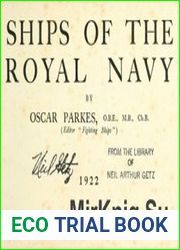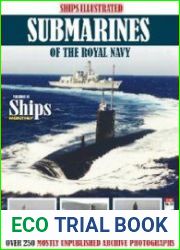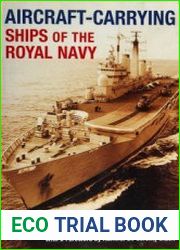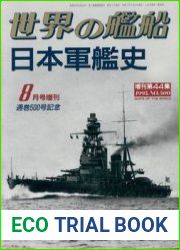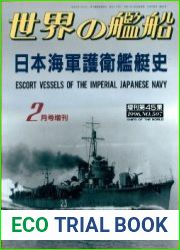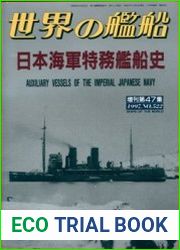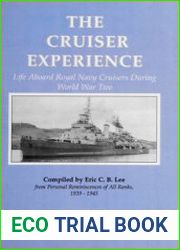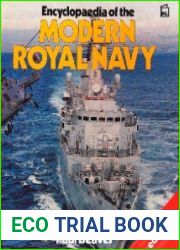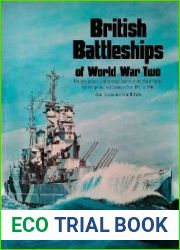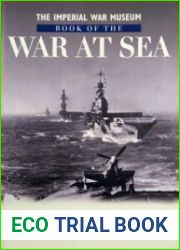
MAGAZINES - MILITARY - Royal Navy (World of Ships №26)

Royal Navy (World of Ships №26)
Year: 2023
Pages: 107
Format: PDF

Pages: 107
Format: PDF

The book describes the development of the British naval fleet from the 19th century to the present day. The book "Royal Navy World of Ships №26" provides a comprehensive overview of the development of the British naval fleet from the 19th century to the present day. The book covers the technological advancements and innovations that have shaped the navy's evolution, from steam-powered ships to nuclear-powered submarines. It also explores how these advancements have impacted the navy's operations and its role in global conflicts. The book begins by discussing the early days of the British navy, when sailing ships were the primary means of transportation and combat. As technology advanced, steam-powered ships were introduced, revolutionizing the navy's capabilities and paving the way for modernization. The author highlights the significance of this shift, noting that it allowed for faster and more reliable travel, as well as increased firepower and maneuverability. As the navy continued to evolve, new technologies such as torpedoes, aircraft carriers, and nuclear-powered submarines were introduced. These advancements significantly enhanced the navy's ability to project power and defend its interests. The book explains how these technologies have been used in various conflicts, including World War I and II, the Falklands War, and the Gulf Wars. One of the most significant aspects of the book is its focus on the human element of naval warfare. The author emphasizes the importance of understanding the experiences of sailors and officers who served on these ships, highlighting their bravery and sacrifice.
В книге описывается развитие британского военно-морского флота с XIX века до наших дней. В книге «Royal Navy World of Ships №26» представлен всесторонний обзор развития британского военно-морского флота с XIX века до наших дней. Книга охватывает технологические достижения и инновации, которые сформировали эволюцию военно-морского флота, от кораблей с паровым двигателем до атомных подводных лодок. В нем также исследуется, как эти достижения повлияли на операции флота и его роль в глобальных конфликтах. Книга начинается с обсуждения первых дней британского флота, когда парусные корабли были основным средством передвижения и ведения боя. По мере развития технологий были введены корабли на паровой тяге, что произвело революцию в возможностях военно-морского флота и открыло путь к модернизации. Автор подчеркивает значимость этого сдвига, отмечая, что он позволил быстрее и надежнее перемещаться, а также повысить огневую мощь и маневренность. Поскольку военно-морской флот продолжал развиваться, были внедрены новые технологии, такие как торпеды, авианосцы и атомные подводные лодки. Эти достижения значительно расширили возможности флота по проецированию силы и защите своих интересов. В книге объясняется, как эти технологии использовались в различных конфликтах, включая Первую и Вторую мировую войну, Фолклендскую войну и войны в Персидском заливе. Одним из наиболее значимых аспектов книги является её фокус на человеческом элементе морской войны. Автор подчеркивает важность понимания опыта матросов и офицеров, служивших на этих кораблях, подчеркивая их храбрость и жертвенность.
Il libro descrive lo sviluppo della marina britannica dal XIX secolo a oggi. Il libro Royal Navy World of Ships numero 26 presenta una panoramica completa dello sviluppo della marina britannica dal XIX secolo a oggi. Il libro comprende i progressi tecnologici e le innovazioni che hanno formato l'evoluzione della marina, dalle navi a motore a vapore ai sottomarini nucleari. In esso si indaga anche su come questi progressi abbiano influenzato le operazioni della flotta e il suo ruolo nei conflitti globali. Il libro inizia con la discussione dei primi giorni della flotta britannica, quando le navi a vela erano il principale mezzo di trasporto e combattimento. Con l'evoluzione della tecnologia sono state introdotte navi a vapore, rivoluzionando le capacità della marina e aprendo la strada alla modernizzazione. L'autore sottolinea l'importanza di questo cambiamento, sottolineando che ha permesso di muoversi più velocemente e in modo più affidabile, e di aumentare la potenza di fuoco e la manovrabilità. Dal momento che la Marina ha continuato a svilupparsi, sono state introdotte nuove tecnologie come siluri, portaerei e sottomarini nucleari. Questi progressi hanno ampliato notevolmente la capacità della flotta di proiettare la forza e proteggere i propri interessi. Il libro spiega come queste tecnologie sono state utilizzate in diversi conflitti, tra cui la Prima e la Seconda Guerra Mondiale, la Guerra delle Falkland e le Guerre del Golfo. Uno degli aspetti più significativi del libro è il suo focus sull'elemento umano della guerra di mare. L'autore sottolinea l'importanza di comprendere l'esperienza dei marinai e degli ufficiali che hanno prestato servizio su queste navi, sottolineando il loro coraggio e il loro sacrificio.
Das Buch beschreibt die Entwicklung der britischen Marine vom 19. Jahrhundert bis heute. Das Buch „Royal Navy World of Ships No. 26“ gibt einen umfassenden Überblick über die Entwicklung der britischen Marine vom 19. Jahrhundert bis heute. Das Buch behandelt die technologischen Fortschritte und Innovationen, die die Evolution der Marine geprägt haben, von dampfgetriebenen Schiffen bis hin zu Atom-U-Booten. Es untersucht auch, wie diese Fortschritte den Flottenbetrieb und seine Rolle in globalen Konflikten beeinflusst haben. Das Buch beginnt mit einer Diskussion über die frühen Tage der britischen Flotte, als Segelschiffe das wichtigste Transport- und Kampfmittel waren. Als sich die Technologie weiterentwickelte, wurden dampfbetriebene Schiffe eingeführt, die die Fähigkeiten der Marine revolutionierten und den Weg zur Modernisierung ebneten. Der Autor betont die Bedeutung dieser Verschiebung und stellt fest, dass sie eine schnellere und zuverlässigere Bewegung sowie eine erhöhte Feuerkraft und Manövrierfähigkeit ermöglicht. Als sich die Marine weiter entwickelte, wurden neue Technologien wie Torpedos, Flugzeugträger und Atom-U-Boote eingeführt. Diese Fortschritte haben die Fähigkeit der Flotte, Stärke zu projizieren und ihre Interessen zu schützen, erheblich erweitert. Das Buch erklärt, wie diese Technologien in verschiedenen Konflikten eingesetzt wurden, darunter im Ersten und Zweiten Weltkrieg, im Falklandkrieg und im Golfkrieg. Einer der wichtigsten Aspekte des Buches ist sein Fokus auf das menschliche Element des Seekrieges. Der Autor betont, wie wichtig es ist, die Erfahrungen der Matrosen und Offiziere zu verstehen, die auf diesen Schiffen gedient haben, und betont ihren Mut und ihr Opfer.
''












